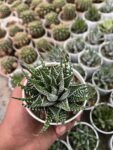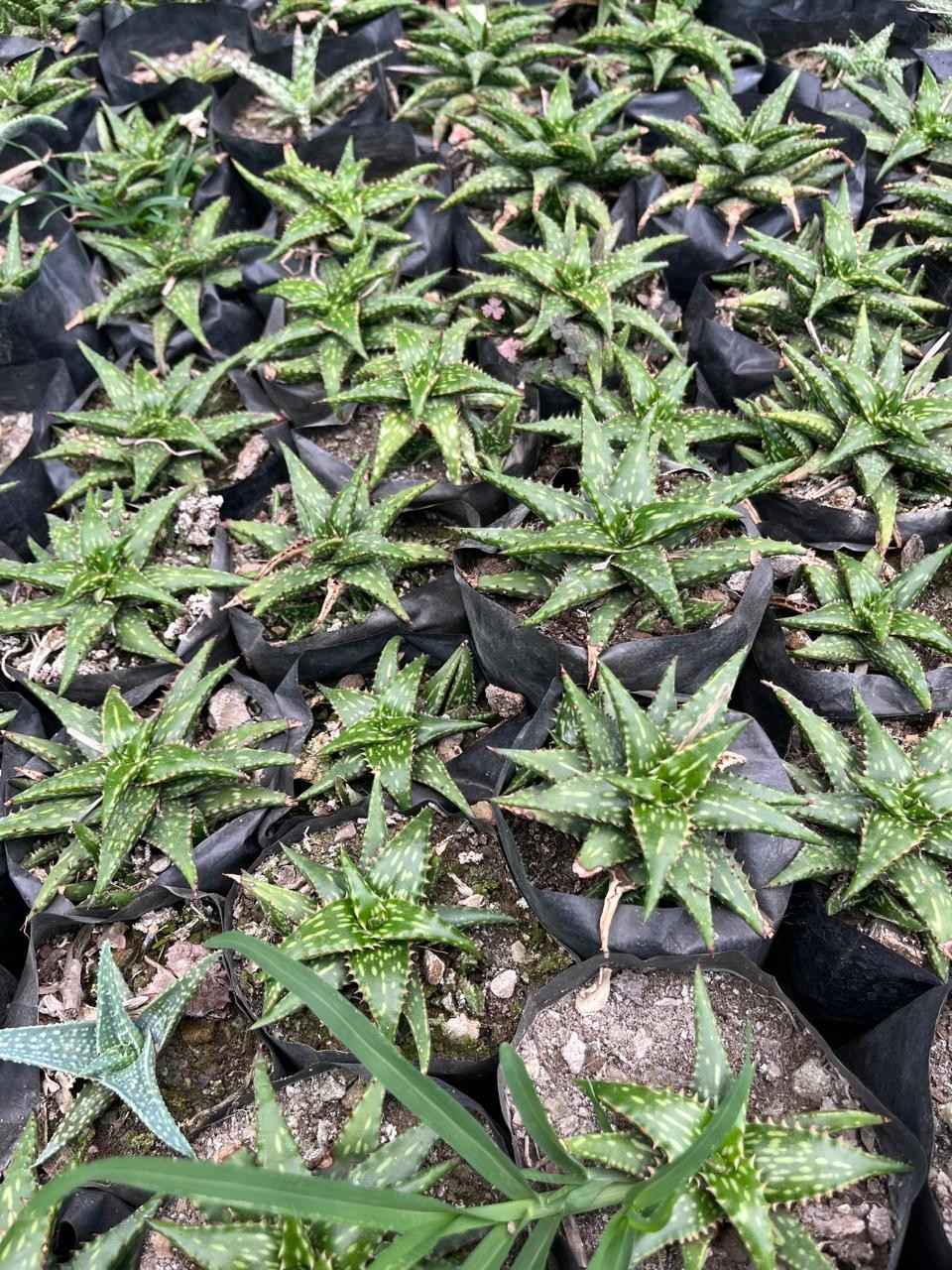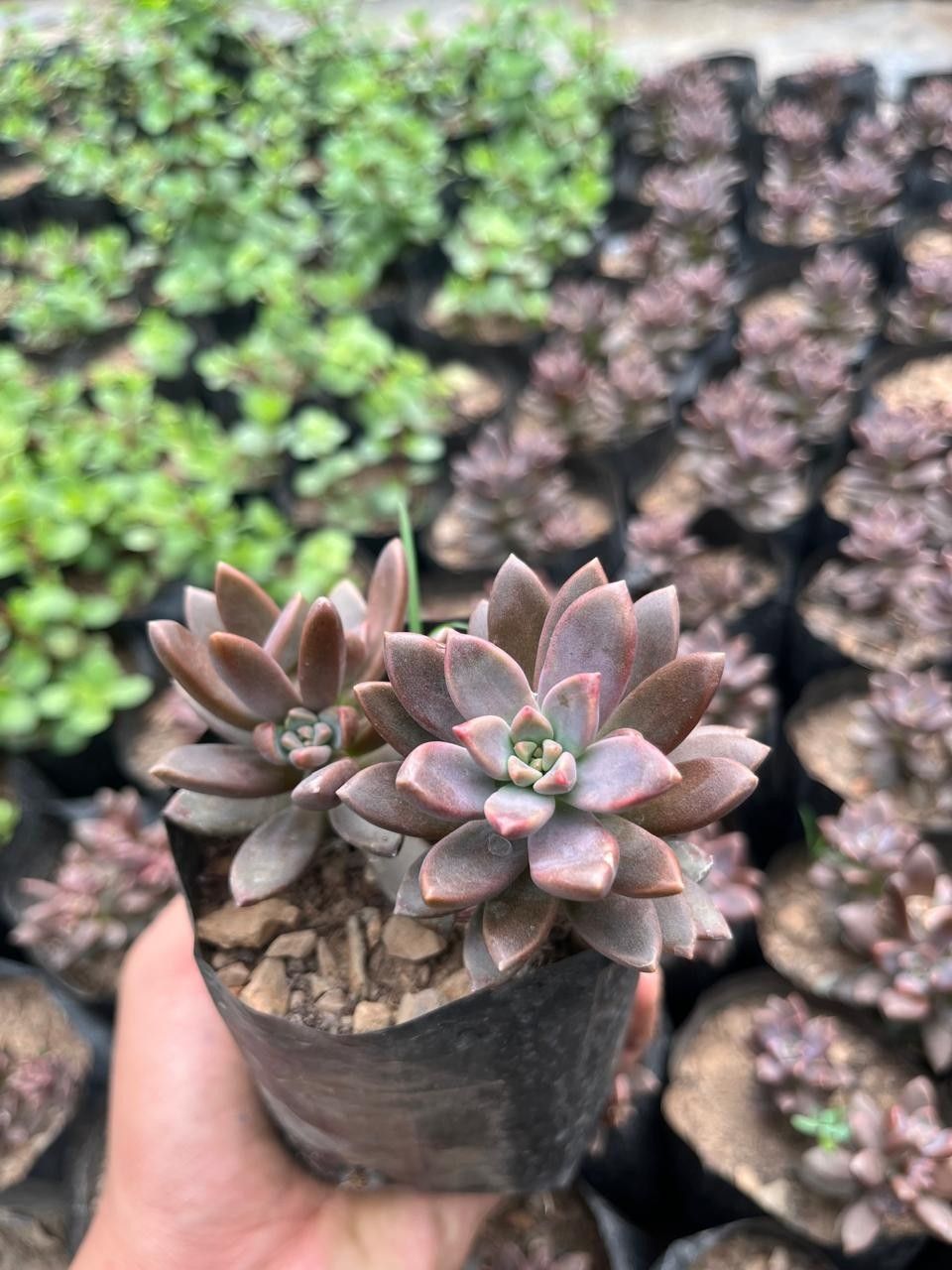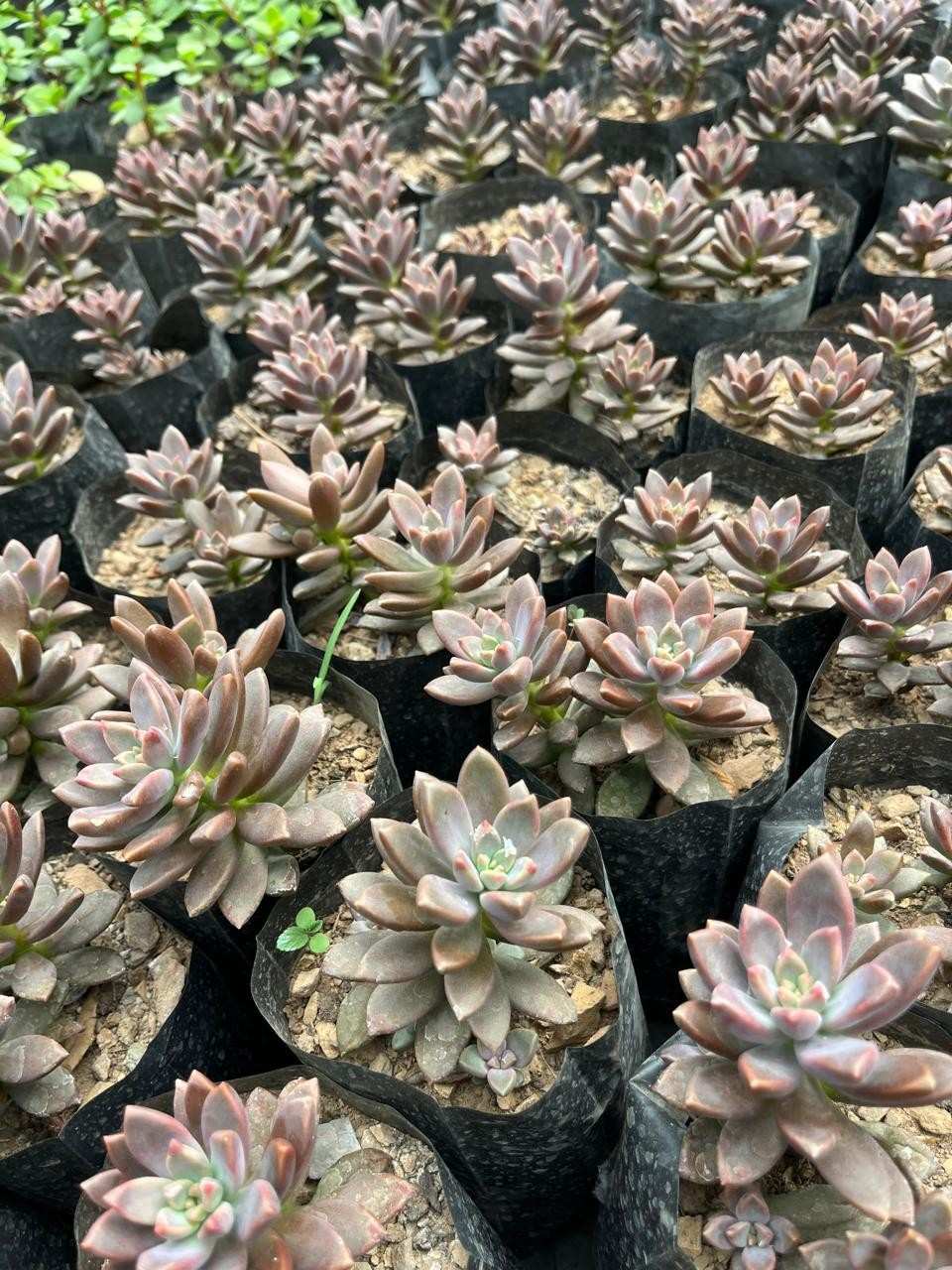Haworthia attenuata
Original price was: ₹199.₹99Current price is: ₹99.
... people are viewing this right now
Description
- Dispatch in 2-3 days
- Country of origin: India
- It’s Compulsory to make an unboxing video of the parcel for refunds within 24 hours.
- Bare Rooted
Haworthia attenuata, commonly known as the Zebra Plant, is a popular succulent species appreciated for its striking, variegated leaves that resemble zebra stripes. This small, easy-to-grow plant is native to South Africa and is well-loved by succulent enthusiasts for its unique appearance and low-maintenance care requirements.
Key Characteristics:
- Leaves: The leaves of Haworthia attenuata are thick, fleshy, and pointed, forming a rosette. The leaves are typically dark green and adorned with white, raised tubercles or ridges that create horizontal stripes across the leaves, giving the plant its “zebra” appearance.
- Size: This plant remains relatively small, usually growing to about 4-6 inches (10-15 cm) in height and width, making it ideal for small pots or containers.
- Flowers: In late spring to summer, Haworthia attenuata produces small, tubular white flowers on long, slender stems, though the flowers are less significant compared to the plant’s attractive foliage.
Care Tips for Haworthia attenuata:
- Light:
- Haworthia attenuata thrives in bright, indirect light but can tolerate some direct sunlight, especially in the morning or late afternoon. Too much direct sunlight can cause the leaves to turn red or brown, so if grown indoors, a spot near an east or west-facing window is ideal.
- Watering:
- Water the plant when the top inch of soil feels dry. Use the “soak and dry” method: water thoroughly, allowing the soil to absorb the water, and then wait for the soil to dry out completely before watering again. Overwatering can lead to root rot, which is a common problem with succulents.
- Soil:
- Use a well-draining cactus or succulent soil mix. Adding perlite or pumice to the soil can improve drainage, ensuring that water does not pool around the roots.
- Temperature:
- Haworthia attenuata prefers temperatures between 65-80°F (18-27°C). It can tolerate cooler temperatures down to around 50°F (10°C) but should be protected from frost. If grown outdoors, bring it inside during colder months if you live in a region that experiences freezing temperatures.
- Fertilizing:
- Fertilize sparingly during the growing season (spring and summer) with a diluted succulent or cactus fertilizer. Avoid fertilizing in the winter when the plant is dormant.
- Propagation:
- Haworthia attenuata is easy to propagate through offsets, which are small plants that grow around the base of the main plant. These can be gently removed and planted in their own pots. Allow the offsets to callous over for a day or two before planting them in well-draining soil.
- Pests and Diseases:
- This plant is generally pest-resistant but can occasionally attract mealybugs or spider mites. Regular inspection and prompt treatment with insecticidal soap or neem oil can help prevent infestations.
Display Ideas:
- Small Pots: Due to its compact size, Haworthia attenuata is perfect for small pots, making it a great choice for desktops, windowsills, or shelves.
- Terrariums: It also works well in terrariums or succulent arrangements, where its striking leaf patterns can stand out.
- Indoor Decor: This plant’s attractive foliage makes it a great addition to indoor spaces, adding a touch of green and interest to any room.























Reviews
There are no reviews yet.